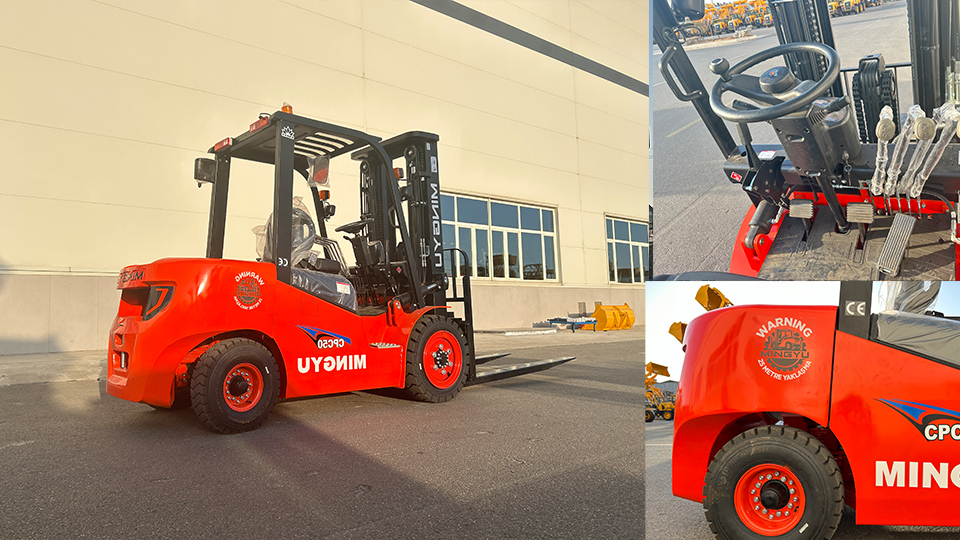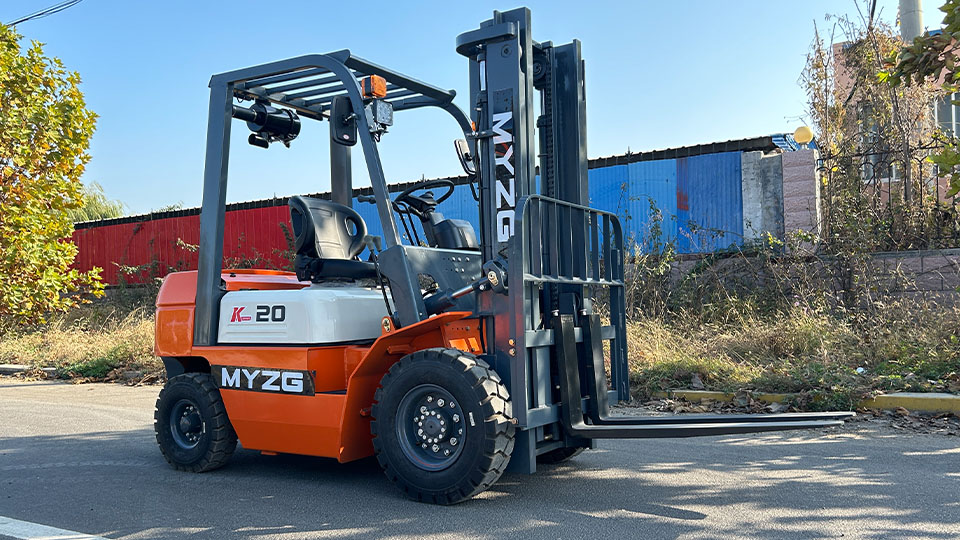
Part I: The Technical Mandate – What "Certified" Actually Means
Before searching for a provider, an operator must understand the non-negotiable legal framework for certification. A common misconception is that passing an online course grants a "license." This is false.
The Three Pillars of OSHA Forklift Certification
OSHA mandates that a powered industrial truck operator is only considered certified after successfully completing all three elements below, with the final evaluation performed in the actual workplace, on the specific equipment, and under the supervision of a qualified person (trainer):

|
Component |
Description |
Delivery Method |
|
1. Formal Instruction (Theory) |
Lectures, videos, written materials, interactive computer learning. Covers general safety, warnings, vehicle stability, pre-op checks, and regulations. |
Online Course (Self-Paced) or In-Person Classroom |
|
2. Practical Training (Demonstration) |
Hands-on demonstration of all operating procedures by the trainer, followed by practical exercises performed by the trainee. Must be specific to the type of truck and the workplace conditions. |
Dedicated Training Center or Employer's Workplace |
|
3. Performance Evaluation |
The final assessment where the operator's competence is observed and documented by the trainer. This must occur in the workplace where the operator will work. |
Dedicated Training Center or Employer's Workplace |
The Critical Role of the Employer
The most important distinction is that the employer is legally responsible for the final certification. A certificate from an online vendor or external school only satisfies the Formal Instruction component. The final, legally binding certification card must be signed by the employer (or their designated qualified trainer) after the practical evaluation.
Part II: Three Paths to Forklift Certification "Near Me"
The optimal way to get certified near you depends entirely on whether you are currently employed in a role that requires forklift operation.
Pathway A: The Employee-Sponsored Route (The Best Option)
This is the most efficient and often free way to become certified. Your "near me" solution is literally your workplace.
1. The Strategy: Leverage Your Employment
Target: Current employees or new hires at a warehouse, manufacturing plant, distribution center, or construction site.
The Cost: Often $0 to the employee. The company covers all costs to maintain OSHA compliance.
2. The Process
|
Step |
Action and Technical Requirement |
|
Inquire with HR/Safety Manager |
Ask specifically for the company's Powered Industrial Truck Operator Training Program. |
|
Formal Instruction (Online/In-House) |
The company will provide access to an online course or conduct an in-house classroom lecture. This satisfies the theory requirement. |
|
Practical Training (On-Site) |
The in-house Qualified Trainer (often a supervisor or safety officer) will lead a demonstration on the specific forklifts you will operate (e.g., Class I electric rider, Class II reach truck, etc.). |
|
Workplace Evaluation (Certification) |
The trainer will conduct the performance evaluation (driving test) on the actual floor, maneuvering around the company's aisles, racks, and loads. Once passed, the trainer signs the documentation, and the employee is fully certified for that job site. |
3. Why This is "Near Me"
This path is perfectly site-specific. The training is customized to the hazards of your actual work environment—the slope of the ramp, the width of the aisles, the capacity of the truck you are using—making it the most compliant and safest option.
Pathway B: The Individual-Seeking-Employment Route (The Hybrid Approach)
This path is for individuals trying to make themselves more marketable for a forklift operator job. Since you don't have an employer to conduct the hands-on portion, you must find a facility that offers the full package.
1. The Strategy: Find a Full-Service Training Provider
Target: Unemployed individuals, career shifters, or those looking to add the certification to their resume.
The Cost: Typically $150 – $300 for a full, single-day course that includes all three components.
2. Where to Search "Near Me"
A simple online search for "forklift certification near me" will yield thousands of results, but the following local entities are the most reliable providers for the practical component:
Local Material Handling Dealerships: Companies that sell, rent, and service forklifts (e.g., Crown, Hyster, Raymond dealers) are mandated to train clients and often host public, full-certification classes at their facilities.
Vocational/Trade Schools and Community Colleges: Many local educational institutions offer 1- to 2-day Continuing Education or Workforce Development classes that bundle classroom and hands-on training.
Private Safety Training Companies: Specialized firms that rent out a training space, equipment, and instructors. Look for a facility with a dedicated warehouse or training bay.
Search Terms to Use:
"Full forklift certification class near me"
"Hands-on forklift training [Your City]"
"Community college forklift operator program"
"Forklift train-the-trainer course" (if seeking a corporate solution)
3. The Technical Caveat for the Individual
Even after completing a full course at a third-party facility, you must inform your future employer that they are still legally required to:
Review your training documentation.

Conduct a final workplace-specific performance evaluation on their equipment.
A reputable training school will provide all necessary paperwork for this final step, making your transition into a new job site seamless.
Pathway C: The Online/Blended Learning Route (The Incomplete Option)
This path is the cheapest and most convenient but only satisfies the theoretical requirement.
1. The Strategy: Separate Theory from Practice
Target: Experienced operators needing a recertification refresher, or operators whose employer is utilizing a cost-saving Blended Training Model.
The Cost: $50 – $100 for the online course.
2. The Process
|
Step |
Action and Technical Requirement |
|
Enroll Online |
Sign up with a reputable online provider (many are found via a simple search). You complete the modules and pass the final written exam to receive your Certificate of Completion. |
|
Hands-on Gap |
This certificate IS NOT full certification. You must now find a way to complete the practical portion. |
|
Employer Evaluation |
The online provider will give you a Performance Evaluation Checklist. You must present this to your current or future employer, who must use their own qualified trainer and equipment to complete the hands-on and final sign-off. |
3. Why This is the Riskiest Path for Beginners
If you are a beginner, taking an online-only course and then cold-calling local companies asking for a "hands-on evaluation" is generally unsuccessful, as most trainers are not equipped or willing to provide only the final evaluation without having conducted the formal instruction. For a new operator, Pathways A or B are strongly recommended.
Part III: Technical Considerations in Provider Selection
When vetting a local training provider—whether it's a trade school or a dealership—ask these technical questions to ensure compliance and value:
1. Which Forklift Classes are Covered?
The provider must train you on the specific Class of Powered Industrial Truck you will use. Do not settle for a generic "forklift" course if you intend to operate a specialized machine.
|
OSHA Class |
Equipment Type |
Training Need |
|
I |
Electric Motor Rider (Counterbalance) |
Basic warehouse operation. |
|
II |
Electric Motor Narrow Aisle (Reach Trucks, Order Pickers) |
Specialized, precise maneuvering. Requires separate training. |
|
III |
Electric Motor Hand or Hand/Rider (Walkie Pallet Jacks) |
Less complex, but still requires certification. |
|
IV & V |
Internal Combustion Engine (Sit-down riders, cushion/pneumatic) |
Standard counterbalance, covers engine maintenance/fueling. |
|
VII |
Rough Terrain (Telescopic Handlers/Lifts) |
Highest complexity; specialized training is essential. |
Verify that the provider has the equipment on-site for the class you need to operate.
2. Who is the Qualified Trainer?
The person conducting the practical evaluation must be deemed a Qualified Person by the employer. In a reputable third-party training center, this means the instructor is an experienced professional who has typically completed a Train-the-Trainer (TTT) course and is authorized to conduct evaluations. Ask the provider about their instructor's credentials and experience level.
3. What is the Documentation Provided?
A compliant provider will furnish two essential documents:
Certificate of Completion: Confirms you passed the written/theory test.
Evaluation Checklist/Form: A detailed, signed record (by the trainer) of your satisfactory performance during the practical evaluation, explicitly listing the topics covered and the date of the successful assessment.
Part IV: Maintaining Certification (Recertification Near You)
Forklift certification is not a lifetime achievement. OSHA requires operators to be re-evaluated at least once every three years (or sooner if the operator is involved in an accident, is observed operating unsafely, or is assigned a different type of truck).
Finding Recertification Near You:
Recertification is almost always simpler and cheaper than the initial training.
Online Refresher: This is the most common and accepted method. Many providers offer a short online refresher course for $50 - $100 that covers the theory updates. The employer then only needs to conduct the practical re-evaluation at the job site.
Employer Records: The easiest way to recertify is by simply undergoing the re-evaluation process with your current employer's in-house trainer, as mandated by the 3-year standard. The employer already has the equipment and the certified trainer on-site, making the process perfectly "local."
Conclusion
To successfully achieve forklift certification "near me," you must shift your perspective from searching for a local "license provider" to identifying a facility that can deliver the required three components of training that culminates in an employer-validated certification.
The most secure, compliant, and cost-effective path is to seek or secure employment that includes Employer-Sponsored Training (Pathway A). If you are an individual pursuing certification proactively, utilize local Material Handling Dealers or Trade Schools (Pathway B) to get the full-scope, hands-on experience necessary to be a marketable and safe operator. In all cases, remember that the true, legally compliant certification only concludes when your competence is evaluated and documented on the specific equipment you use, in the specific workplace where you perform your duties.
Name: selena
Mobile:+86-13176910558
Tel:+86-0535-2090977
Whatsapp:8613181602336
Email:vip@mingyuforklift.com
Add:Xiaqiu Town, Laizhou, Yantai City, Shandong Province, China